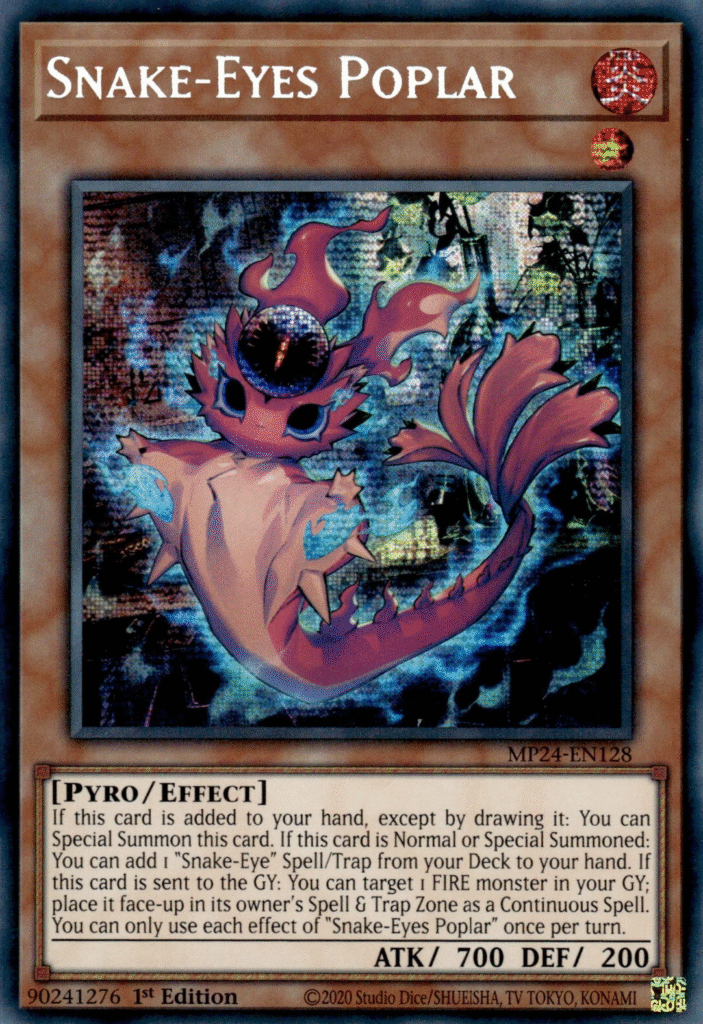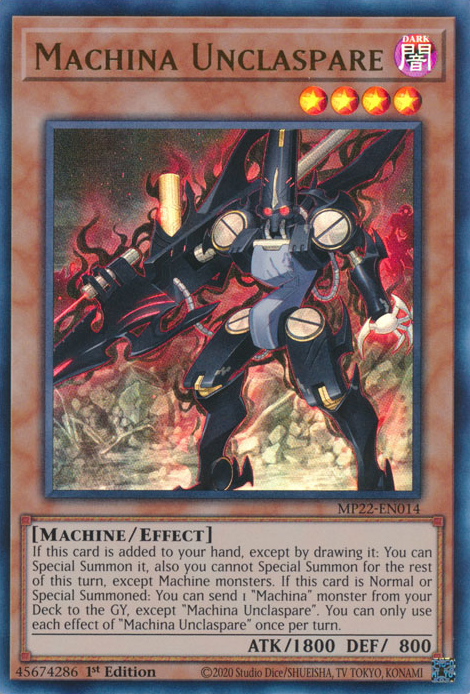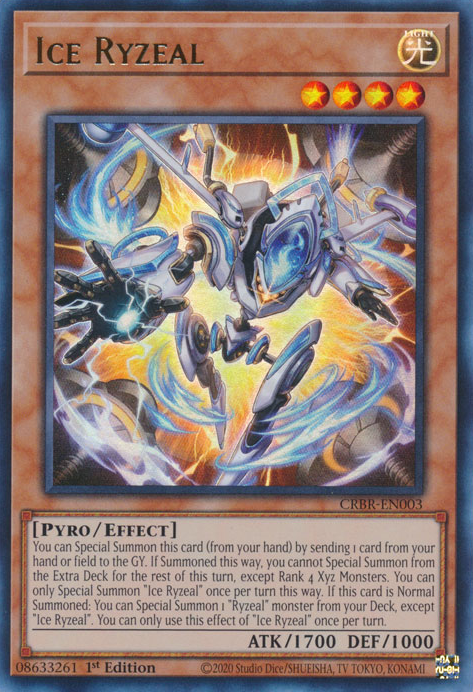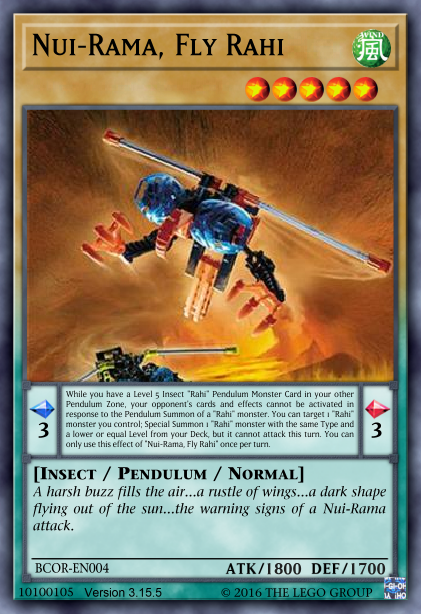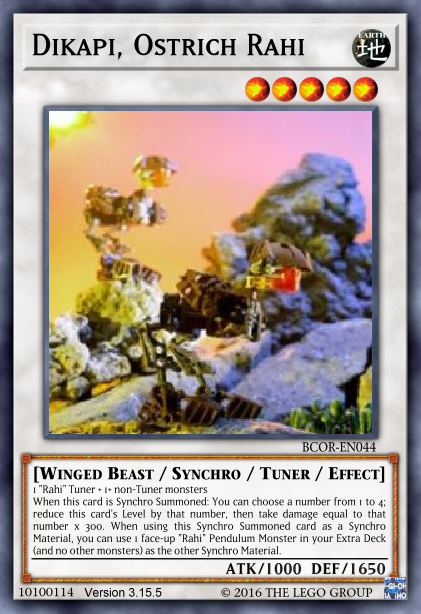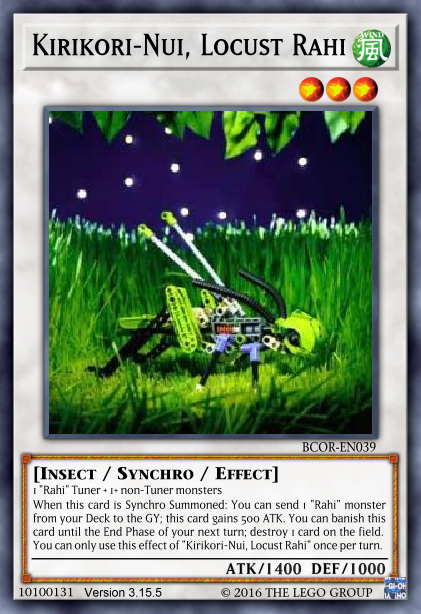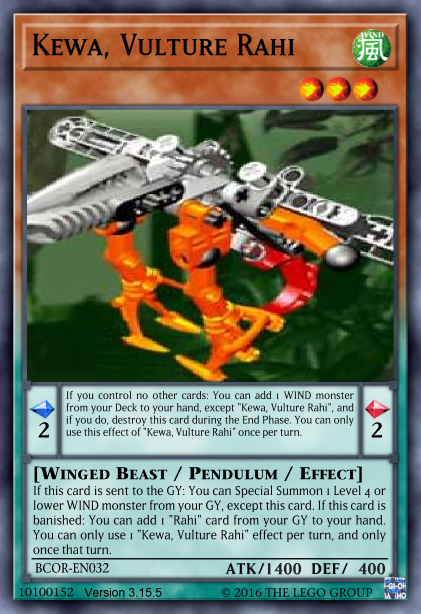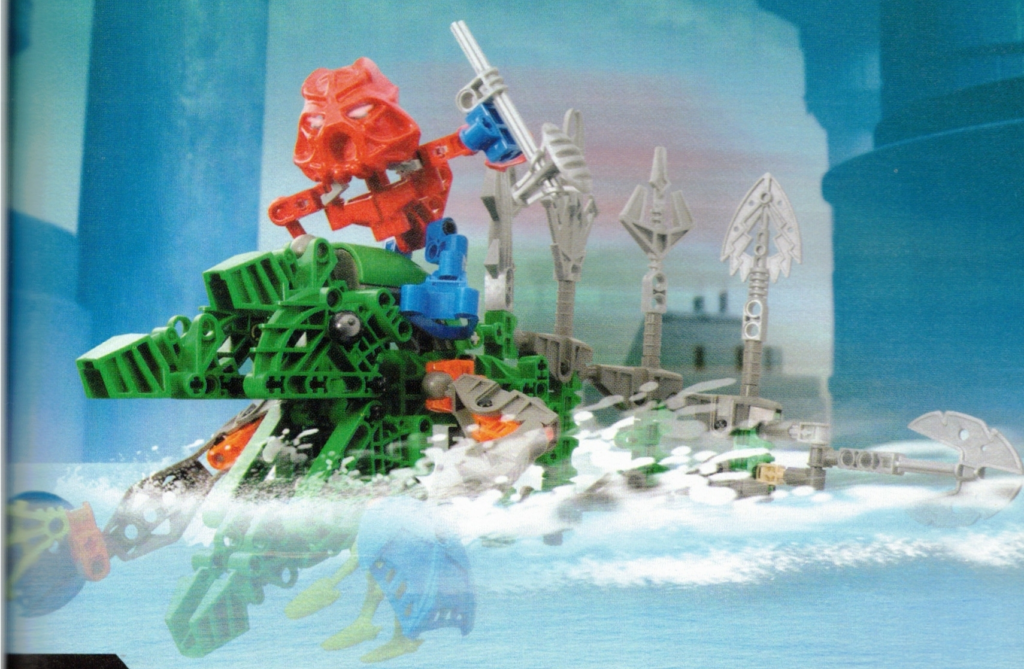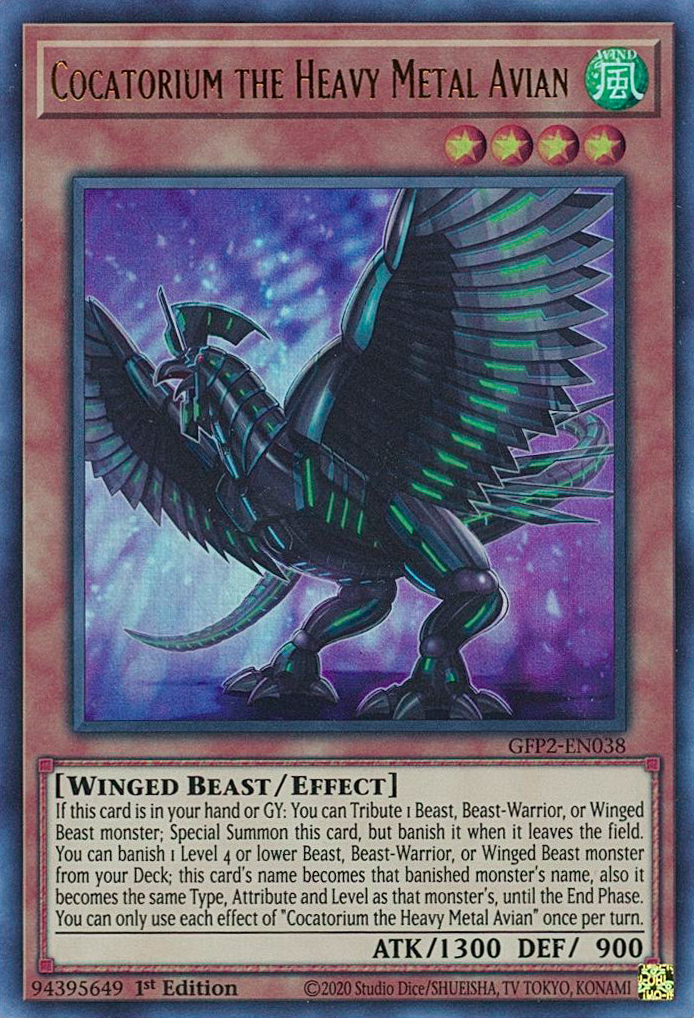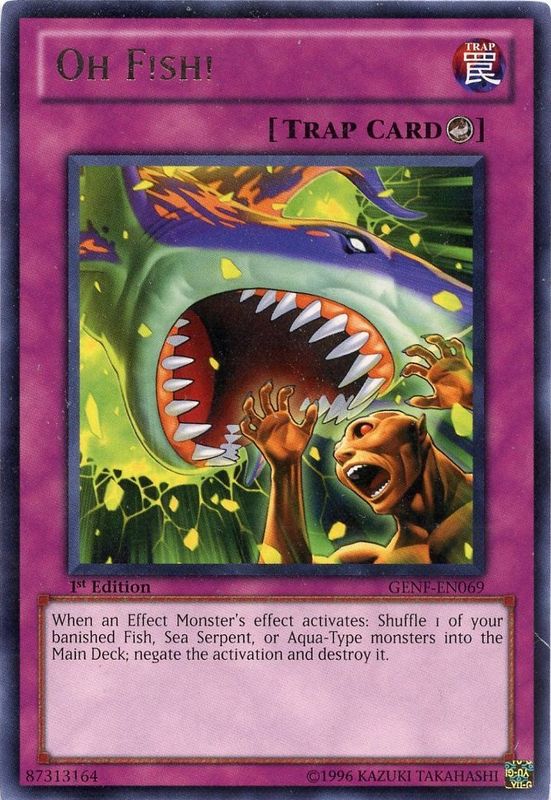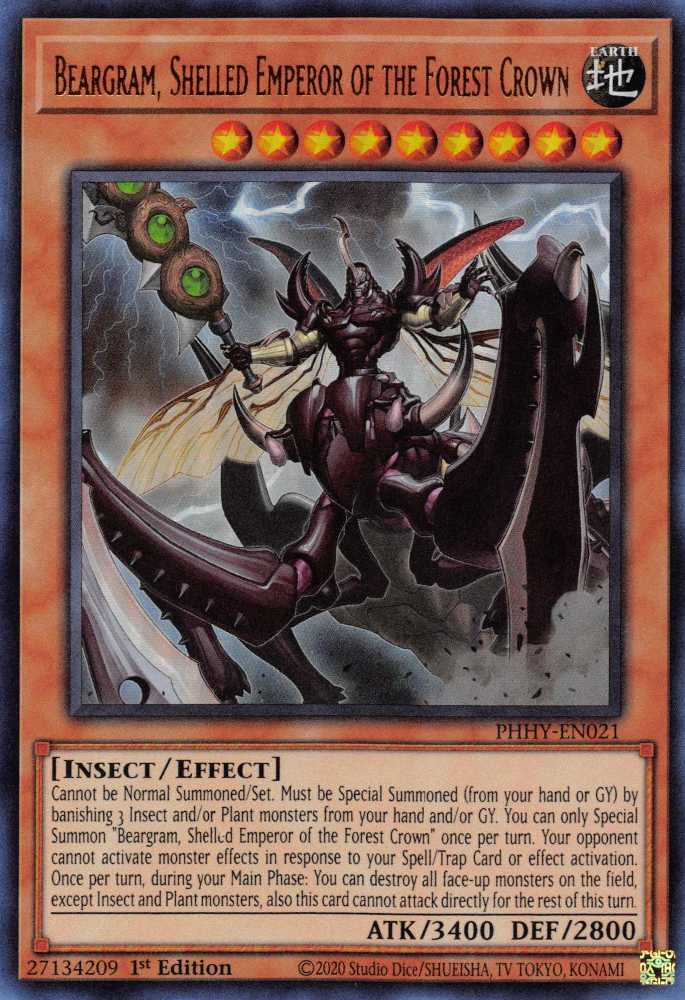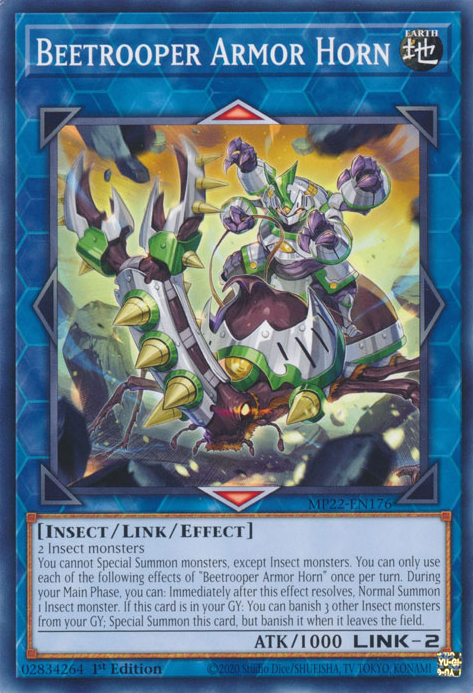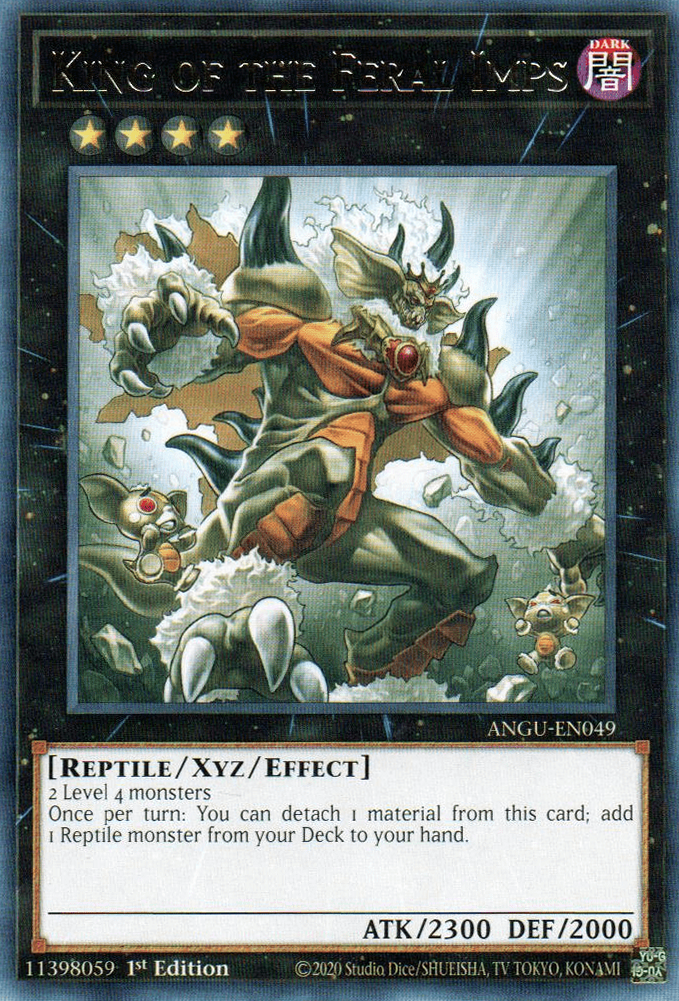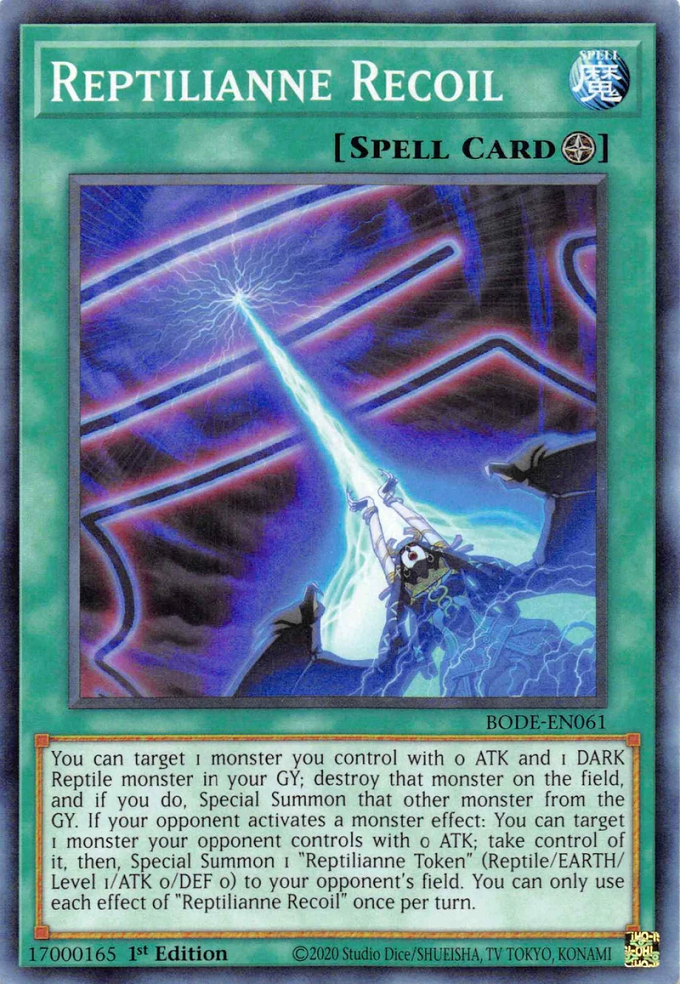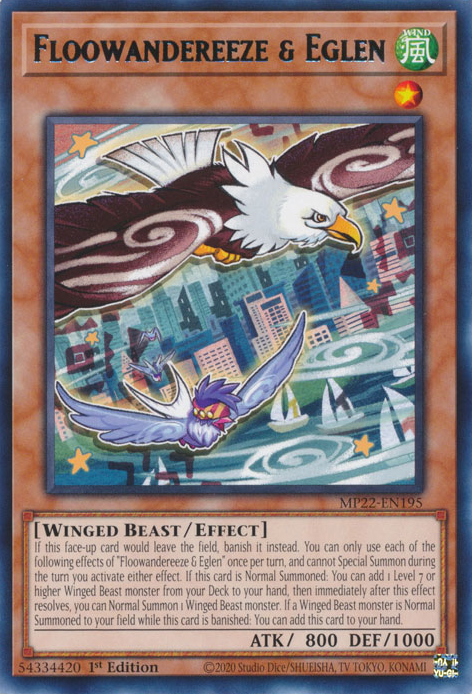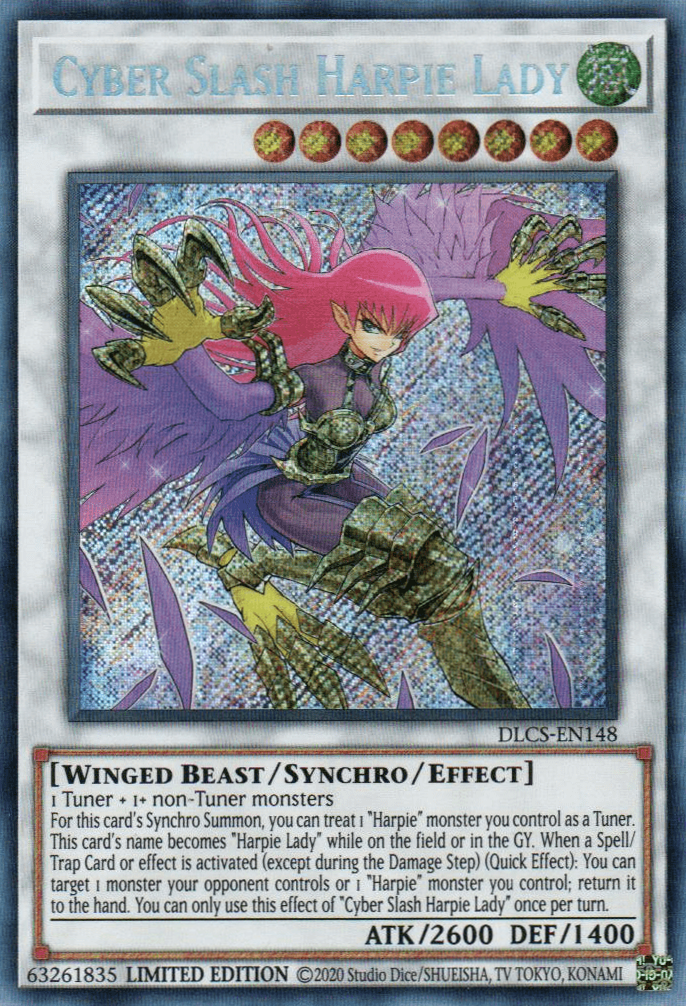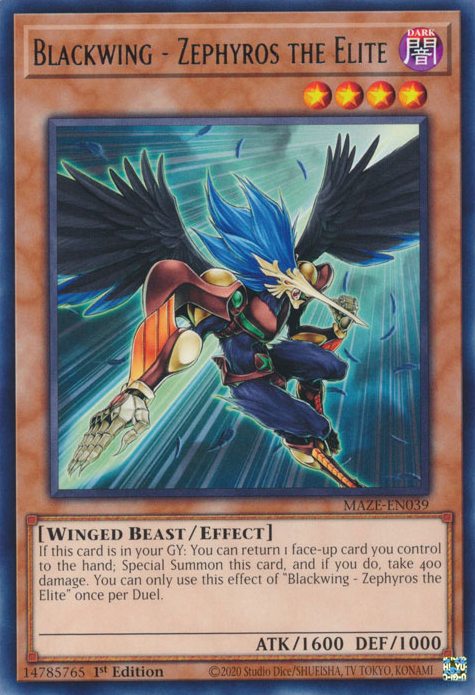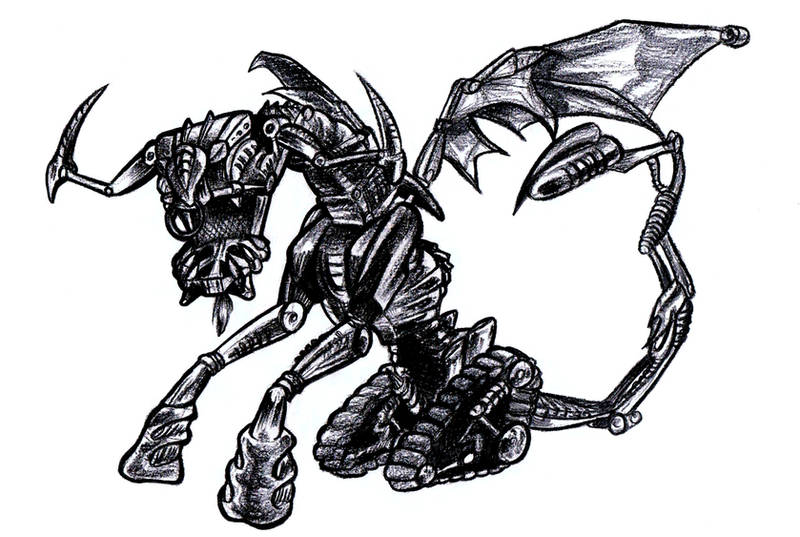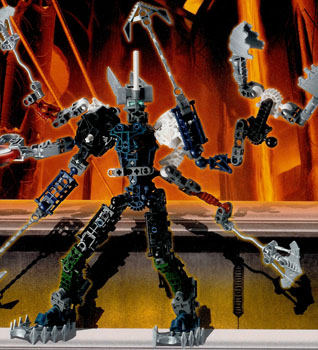With the sonorous rhyme of pottery, we enter the final article of Rahi investigation, just in time to start actually working on the update.
The remaining topic is simply all those archetype support cards that provide basic utility and are meant to be played in different strategies regardless of Type or focus, to avoid reimplementing a certain core lineup of effects over and over again.
See also:
Initial Considerations
Our scholarly journey so far has uncovered that it makes sense to group the multitude of Rahi species into a few major Types focused around distinct playstyles. Beast, Winged Beasts, and Beast-Warriors who climb into massive Synchros and win via beatdown. Aqua, Fish, and Sea Serpents who use removal and disruption effects to control the board without centering on singular boss monsters. Reptiles running a focused strategy of moving monsters, particularly Pendulums, between the front and back rows. And Insects, who provide somewhat splashable swarming of small critters and a toolbox of larger ones. All rounded out by the occasional wildcard that’s a Dragon or something.
Now if we want a reusable “Rahi core”, it’s important for it to be smoothly compatible with all of those major strategies, but at the same time it shouldn’t have too much direct synergy with any one of them, as it would just make them feel suboptimal when used in the rest. Also, anything we can put on the intentionally splashable Insects and the various standalone Dragons should be on a good path towards filling the kind of role we are aiming for here.
Other than that, a very simple and straightforward way for a card to support all available Types without belonging to any of them is for it to not have a Type at all – in other words, Spell and Trap Cards. The Rahi archetype already contains several of them, so making use of those slots effectively could lift a lot of the burden off the monster lineup.
But in any case, what needs to be established first and foremost if we want our generics to handle the universally required groundwork is this: What mechanics are actually common to all Rahi strategies, and what can be done to support those in a simple, easy-to-use manner? Here are some thoughts on that.
- Synchro Summoning! While I have planned Fusions, Links, Xyz, and even Rituals for certain special cases, the primary representation for combiners and other large Rahi is supposed to be Synchros. Beasts & co go in extra hard on this aspect, but some basic access should be guaranteed and supported for everyone.
- Pendulums with GY and banishment effects. One of my earliest Rahi observations on this site was about that design making it so they inhabit every niche of the gameboard ecosystem, which really suits their nature as wildlife. So I’d like to preserve that aspect, and since it doesn’t especially connect to any of the proposed playstyles, it’s probably going to end up a shared trait.
- Support Spells/Traps with an additional effect in the GY. Nowadays, this is pretty common, but back when the first version of BCOR was made, it was meant to be a special trait – not of Rahi, but of Makuta. That’s why cards like Rahi Swarm or Rahi Hive Showdown were deliberately themed after instances of Makuta using the Rahi as a tool to attack the villages of Mata Nui. Be that as it may, the concept is still somewhat appropriate for the Rahi archetype in general, since milling and discarding are going to be major ways to actually get your Pendulums into the GY. So it’s possible additional Rahi backrow in the long term will also function like this, and as mentioned before, non-monster cards are a good vehicle for utility across Types.
Assuming I didn’t forget anything, all mechanics beyond that should be specific to a certain Type or other subgrouping of the large Rahi pool. So that restricts the focus for generic support to a few key areas: stuff like searching, revival, and maybe removal that archetypes generally tend to have, Synchro Summoning, and the specific mechanic of getting Rahi monsters, Spells, and Traps into the GY or banishment. Let’s talk about the options we have for each.
Support Directions
Searching
A very straightforward example I tend to think of when I talk about not wanting to repeat universally applicable effects across multiple subgroups is searching, i.e., adding a specified card from your Deck to your hand. Obviously, having a card that just says Add 1 “Rahi” monster is better than having one that lets you Add 1 Beast, Beast-Warrior, or Winged Beast “Rahi” monster, plus one that lets you Add 1 Aqua, Fish, or Sea Serpent “Rahi” monster, plus one that lets you Add 1 Reptile “Rahi” monster, and so on. While we do not quite have such a searcher in the style of ROTA, there are a few cards that get reasonably close.

Rahi Swarm
SpellIf your opponent controls a monster and you control no monsters: Add 2 “Rahi” monsters with the same Type, but different names, from your Deck to your hand. For the rest of this turn, your opponent takes no damage. You can banish this card from your GY; Special Summon 1 “Rahi” monster from your GY, but it cannot attack, also it is destroyed during the End Phase. You can only use 1 “Rahi Swarm” effect per turn, and only once that turn.
Bionicle: Challenge of the Rahi (v3.15.5)One is Rahi Swarm, a double searcher in which a very early flash of Type-based strategy planning can be seen. That is, it searches regardless of Type, so long as both of your targets belong the same one. However, it doesn’t quite get all the way to fitting the current iteration of the concept, since it fails to account for the multi-Type groups around Beasts and Fish. What it does still cover are the Normal Pendulum Pairs for which it was originally designed, and so it will probably continue to work that way in the new version, meaning we should keep in mind that monsters you want in your hand together benefit somewhat from having the exact same Type.

Gukko-Kahu, Hawk Rahi
Synchro Effect MonsterLevel 6 | WIND Winged Beast | ATK 2500 / DEF 10001 “Rahi” Tuner + 1+ non-Tuner monsters
If this card is Synchro Summoned: Draw 1 card. If this card is sent from the field to the GY: Add 1 “Rahi” monster from your Deck to your hand. You can only use each effect of “Gukko-Kahu, Hawk Rahi” once per turn.
Bionicle: Challenge of the Rahi (v3.15.5)The Gukko-Kahu gives us a search of just one, but on an Extra Deck monster … when it’s sent from the field to the GY. That’s a bit nonstandard, but basically the idea is to search extension or followup while you use it as material to climb higher. Not out of tune with how Beast-ish Rahi are supposed to work, but may need some more specific limitations to avoid crossing streams with other Types.

Nui-Rama, Fly Rahi
Normal Pendulum MonsterLevel 5 | Scale 3/3 | WIND Insect | ATK 1800 / DEF 1700Pendulum Scale = 3
[ Pendulum Effect ]
While you have a Level 5 Insect “Rahi” Pendulum Monster Card in your other Pendulum Zone, your opponent’s cards and effects cannot be activated in response to the Pendulum Summon of a “Rahi” monster. You can target 1 “Rahi” monster you control; Special Summon 1 “Rahi” monster with the same Type and a lower or equal Level from your Deck, but it cannot attack this turn. You can only use this effect of “Nui-Rama, Fly Rahi” once per turn.
—————————————-
[ Flavor Text ]
A harsh buzz fills the air…a rustle of wings…a dark shape flying out of the sun…the warning signs of a Nui-Rama attack.
Bionicle: Challenge of the Rahi (v3.15.5)The Nui-Rama offers a different kind of search by Special Summoning from the Deck, and like the Rahi Swarm that references it, it does so by matching another monster’s Type. In principle, this being an Insect does qualify it for being used by everyone and everything, but I kind of see the high-Level Normal Pendulums as something meant to specifically go into the native Type strategy, and their Insect member should be no different. Might end up restricting this one a bit more, but as a Level 5 brick with no monster effects it’s probably not worth running outside of Insects anyway. Side note, the Nui-Kopen also gets something from the Deck, but does it in a weird probabilistic way, so can’t really consider that one seriously.

Encounter in the Drifts
Counter TrapWhen your opponent Summons a monster(s), except during the Damage Step: Special Summon 1 “Rahi” monster whose Level is less than or equal to the highest Level among those monsters from your hand or Deck. Cards and effects cannot be activated in response to this Summon. You can only activate 1 “Encounter in the Drifts” per turn.
Bionicle: Challenge of the Rahi (v3.15.5)The Trap Encounter in the Drifts serves a similar purpose and also does it in a weird reactive way, but as a non-monster I’m much more inclined to preserve it for universal use. The thing is, this kind of Summoning in response to something usually works best when the monsters you bring out actually do stuff immediately when they hit the field, and how much that applies to Rahi is going to vary by strategy. Not sure yet how and where this card is going to be integrated, and in a redesign of the effect it might also be interesting to link it with The Drifts a bit more.
Next up, a known trio of troublemakers makes not trouble, but its return.
The Dragon

Hikaki, Dragon Rahi
Pendulum Effect MonsterLevel 4 | Scale 5/5 | FIRE Dragon | ATK 1900 / DEF 700Pendulum Scale = 5
[ Pendulum Effect ]
When a “Rahi” monster(s) is Special Summoned: You can add 1 “Rahi” Tuner from your Deck to your hand. You can only use this effect of “Hikaki, Dragon Rahi” once per turn. If you control no monsters: You can Special Summon this card from your Pendulum Zone.
—————————————-
[ Monster Effect ]
A Synchro Monster that was Summoned using this card as Synchro Material gains this effect.
● When a Trap Card is activated (Quick Effect): You can shuffle 1 face-up “Rahi” Pendulum Monster from your Extra Deck into the Deck; negate the activation, and if you do, destroy that card.
Bionicle: Challenge of the Rahi (v3.15.5)The Scorpion

Kofo-Jaga, Scorpion Rahi
Pendulum Effect MonsterLevel 4 | Scale 5/5 | FIRE Insect | ATK 1300 / DEF 1900Pendulum Scale = 5
[ Pendulum Effect ]
When a “Rahi” monster is Normal Summoned: You can add 1 “Rahi” Pendulum Monster from your Deck to your hand. You can only use this effect of “Kofo-Jaga, Scorpion Rahi” once per turn. If you control no monsters: You can Special Summon this card from your Pendulum Zone.
—————————————-
[ Monster Effect ]
A Synchro Monster that was Summoned using this card as Synchro Material gains this effect.
●When a monster effect is activated (Quick Effect): You can shuffle 1 face-up “Rahi” Pendulum Monster from your Extra Deck into the Deck; negate the activation, and if you do, destroy that monster if its ATK is lower than the ATK of the monster you shuffled into the Deck.
Bionicle: Challenge of the Rahi (v3.15.5)The Duck

Taku, Duck Rahi
Pendulum Effect MonsterLevel 4 | Scale 5/5 | WIND Winged Beast | ATK 1400 / DEF 1700Pendulum Scale = 5
[ Pendulum Effect ]
During your End Phase: You can add 1 “Rahi” Pendulum Monster from your Deck to your Extra Deck face-up. If you control no monsters: You can Special Summon this card from your Pendulum Zone.
—————————————-
[ Monster Effect ]
A Synchro Monster that was Summoned using this card as Synchro Material gains this effect.
● When a Spell Card is activated (Quick Effect): You can shuffle 1 face-up “Rahi” Pendulum Monster from your Extra Deck into the Deck; negate the activation, and if you do, destroy that card.
Bionicle: Challenge of the Rahi (v3.15.5)The Hikaki searches Tuners when you Special Summon, the Kofo-Jaga searches Pendulums when you Normal Summon, and the Taku just puts stuff straight into the face-up Extra Deck. This is all in service of a little mini-engine that stacks bonus negates on a Synchro Monster, but I don’t think I’ll be keeping that around as it lacks any basis in the lore whatsoever.
So, can we at least apply their functionality as searchers generically? The two most relevant ones do happen to be a Dragon and an Insect and are therefore not strictly tied to one strategy, but I think the search utility they offer right now isn’t sufficient to make up for the Type mismatch of including them. They’d need to be cleaned up into something that’s not necessarily stronger, but easier to use and providing a service that’s hard to replace otherwise.
The Taku is out, sorry. Winged Beasts have their own thing going on, and I’m sure it will find an appropriate use over there without needing to fly into other decks.

Mahi, Goat Rahi
Pendulum Effect MonsterLevel 3 | Scale 2/2 | EARTH Beast | ATK 700 / DEF 1500Pendulum Scale = 2
[ Pendulum Effect ]
(Quick Effect): You can send 1 face-up “Rahi” Pendulum Monster from your Extra Deck to the GY, then destroy this card. You can only use this effect of “Mahi, Goat Rahi” once per turn.
—————————————-
[ Monster Effect ]
If this card is sent to the GY: You can add 1 Level 3 or lower “Rahi” monster from your Deck to your hand. If this card is banished: You can add 1 of your banished Level 3 or lower “Rahi” monsters that was not banished this turn to your hand. You can only use 1 “Mahi, Goat Rahi” effect per turn, and only once that turn.
Bionicle: Challenge of the Rahi (v3.15.5)Similarly, the Mahi searching low-Level Rahi (the handtrap Tuners, mainly) doesn’t really make too much sense for a Beast – those barely even have small ones among their ranks, for one thing. So this is another generic search we’ll end up losing in favour of supporting a specific sub-strategy.

Ghekula, Amphibious Rahi
Pendulum Effect MonsterLevel 4 | Scale 5/5 | WATER Aqua | ATK 1550 / DEF 1400Pendulum Scale = 5
[ Pendulum Effect ]
During your Main Phase: You can add 1 “Rahi” Pendulum Monster from your Deck or GY to your hand, except “Ghekula, Amphibious Rahi”, and if you do, take damage equal to its original ATK. You can only use this effect of “Ghekula, Amphibious Rahi” once per turn. If you control no monsters: You can Special Summon this card from your Pendulum Zone.
—————————————-
[ Monster Effect ]
A Synchro Monster that was Summoned using this card as Synchro Material gains this effect.
●Once per turn, if you take effect damage: Gain LP equal to the damage you took, and if you do, inflict the same amount of damage to your opponent.
Bionicle: Beware the Swarm (v3.15.5)The Ghekula is a weird one that only searches because I couldn’t think of anything else useful to include in its Pendulum Effect, where the main point is actually dealing damage to yourself. Once again, it’s Aqua, those aren’t supposed to be generic, and thus there is no need to consider it here any further.

Takea, Shark Rahi
Pendulum Effect MonsterLevel 4 | Scale 5/5 | WATER Fish | ATK 1800 / DEF 900Pendulum Scale = 5
[ Pendulum Effect ]
At the start of the Damage Step, if a “Rahi” monster you control battles: You can double any battle damage your opponent takes from that battle. You can only use this effect of “Takea, Shark Rahi” once per turn. If you control no monsters: You can Special Summon this card from your Pendulum Zone.
—————————————-
[ Monster Effect ]
A Synchro Monster that was Summoned using this card as Synchro Material gains this effect.
●If this card inflicts battle damage to your opponent: Special Summon 1 “Rahi” monster from your Deck with ATK less than or equal to half the damage inflicted, but it cannot attack this turn.
Bionicle: Challenge of the Rahi (v3.15.5)Similar things can be said about the Takea, which summons from Deck in the weirdest, most roundabout way possible. Will definitely end up changed into something that meshes with its Fishy friends better.
So, final tally, it looks like we’ll just have three cards – a Spell, a Dragon, and an Insect – that can be used to add search power to any and all Rahi decks. Should be enough since there can always be Type-specific consistency cards to further boost it where needed; we just have to make sure these three slots are used effectively without huge redundancy. For example, if Rahi Swarm takes care of searching monsters, maybe the other two could be variants of Spell/Trap searchers. We don’t have those at all right now, and it kind of makes sense they’d be generic when the backrow is too.
Revival
Oh look, it’s Rahi Swarm again.

Rahi Swarm
SpellIf your opponent controls a monster and you control no monsters: Add 2 “Rahi” monsters with the same Type, but different names, from your Deck to your hand. For the rest of this turn, your opponent takes no damage. You can banish this card from your GY; Special Summon 1 “Rahi” monster from your GY, but it cannot attack, also it is destroyed during the End Phase. You can only use 1 “Rahi Swarm” effect per turn, and only once that turn.
Bionicle: Challenge of the Rahi (v3.15.5)The GY effect on this card is indeed a revive, so it fits two of the categories we’re looking for here. That’s perhaps not a bad approach to take generally, since it will help us keep the package of reusable utility small and in turn leave more room for each deck’s own gimmick. One thing I would change about this is making the revival also dependent on matching Types somehow, to keep that theme consistent.

Husi, Ostrich Rahi
Pendulum Effect MonsterLevel 4 | Scale 5/5 | EARTH Winged Beast | ATK 1700 / DEF 1100Pendulum Scale = 5
[ Pendulum Effect ]
If a card in your Pendulum Zone is destroyed: You can Special Summon 1 face-up Level 4 or lower “Rahi” Pendulum Monster from your Extra Deck. You can only use this effect of “Husi, Ostrich Rahi” once per turn. If you control no monsters: You can Special Summon this card from your Pendulum Zone.
—————————————-
[ Monster Effect ]
A Synchro Monster that was Summoned using this card as Synchro Material gains this effect.
●If this card is destroyed by a card effect and sent to the GY: Target 1 “Rahi” monster in your GY with a lower Level than this card; Special Summon it.
Bionicle: Challenge of the Rahi (v3.15.5)The Husi has revival locked behind a floating effect granted to a Synchro Monster, so even if it wasn’t mostly disqualified by virtue of its Type, using that probably wouldn’t be realistic.

Ussal, Crab Rahi
Pendulum Effect MonsterLevel 3 | Scale 2/2 | EARTH Beast | ATK 1000 / DEF 1000Pendulum Scale = 2
[ Pendulum Effect ]
Once per turn: You can reduce the Pendulum Scale of the card in your other Pendulum Zone by 1 until the End Phase; this turn, while this card is in your Pendulum Zone, you can also Pendulum Summon “Rahi” Pendulum Monsters from your GY, but monsters Summoned this way are destroyed during the End Phase.
—————————————-
[ Monster Effect ]
If this card is sent to the GY: You can Special Summon 1 Level 4 or lower EARTH monster from your GY, except this card. If this card is banished: You can Special Summon 1 Level 3 or lower “Rahi” monster from your GY. You can only use 1 “Ussal, Crab Rahi” effect per turn, and only once that turn.
Bionicle: Challenge of the Rahi (v3.15.5)The Ussal lets us revive stuff in the fanciest way possible, by rewriting the rules and Pendulum Summoning from the GY. I kind of want to keep that just for the novelty, but it may be refined with a Beast(-ish) lock and more Synchro focus. There’s also a second avenue of revival in the monster effect for EARTH monsters specifically, which kind of bleeds into other Type decks at random points, but this effect, as well as its counterparts for other Attributes, will require careful planning of their interaction with all kinds of decks anyway.

The Makuta
Ritual Effect MonsterLevel 2 | DARK Fiend | ATK 1500 / DEF 1500You can Ritual Summon this card with “I am Nothing”. Must be Ritual Summoned, and cannot be Special Summoned by other ways. If this card is Ritual Summoned: Return all Special Summoned Level/Rank 5 or higher monsters on the field to the hand. You can Tribute this card; Special Summon 1 “Rahi” monster from your hand, Deck, or GY whose Level is less than or equal to the number of monsters in your GY. You can only use this effect of “The Makuta” once per turn.
Bionicle: Challenge of the Rahi (v3.15.5)And finally, we should at least mention The Makuta one time. The overlord of the infected Rahi can get any of them to the field from almost anywhere, but I don’t really see that as Rahi support. Instead, you’re meant to use it to easily access Rahi in a deck focused around Makuta, which is something that will have to be worked out in lockstep with the Rahi update as a whole.
Synchro Support
Okay, what does that even mean? There isn’t really a specific phrase I can search to filter the cards that apply, so I guess the play is going through the potential categories of universal support and finding the stuff that interacts with Synchros. For what it’s worth, though, I can already say that none of the currently implemented cards explicitly mention “Rahi” Synchro Monsters.

Siege of the Rahi
Continuous SpellOnce per turn, when your opponent Normal or Special Summons a Level 4 or lower monster(s): You can change 1 of those monsters to face-down Defense Position. During your End Phase, if you do not control a Level 5 or higher “Rahi” monster: Destroy this card. If a Level 5 or higher “Rahi” monster you control would be destroyed, you can banish this card from your GY instead.
Bionicle: Challenge of the Rahi (v3.15.5)Of the Spells/Traps, the one that gets closest is Siege of the Rahi, which acts as disruption if you control a high-Level Rahi, and as protection for that same group. That does include a lot of Synchros, but not all Synchros are high-Level and not all high Levels are Synchros, so it’s only tangentially relevant.
Since Synchro Summoning is a pretty monster-centric process, I’m not sure backrow can meaningfully contribute to that anyway, outside of general stuff that gets you more monsters. An alternative way they could take advantage of Synchros being used by all Types is gaining additional or stronger effects while you control a Synchro Monster. Something like Devastation of the Rahi may get to blow up additional cards in that case, for example.
One thing that more directly helps us with Synchro plays is, of course, Tuners. As those tend to be at low Levels, Insects may be of some assistance.

Fikou, Spider Rahi
Tuner Effect MonsterLevel 1 | EARTH Insect | ATK 600 / DEF 400You can banish this card from your GY, then target 1 Level 3 or higher “Rahi” monster you control; reduce that target’s Level by 1, then Special Summon 1 “Fikou, Spider Rahi” from your hand or Deck. You can only use this effect of “Fikou, Spider Rahi” once per turn.
Bionicle: Challenge of the Rahi (v3.15.5)If the Normal Pendulums were the first prototype of Type-specific Rahi support, then the Fikou was the original Type-independent support card to go with them. It’s purpose is simply to duplicate itself next to a high-Level Rahi to enable a Synchro play, which is kind of the key thing we’re going to need for all the different Synchro-based strategies: An easily Special Summonable Tuner.
The rest of the little bug dudes – the Hoto , Electric/Lightning Bug , and Cliff Bug -do not currently satisfy this requirement, instead acting as handtraps with no inherent way to get them on the field for Synchro plays. That leaves the Fikou in an unfortunately load-bearing position, and has just now started bothering me aesthetically because all of these monsters even have different Attributes! They’re missing DARK and WIND, but the powers afforded to me by The Spreadsheet let me know those slots can be filled later with something like Niazesk and Protodites, so really these guys are just asking to be grouped together. Will probably redesign them all so they can get themselves on the field for some Tuning, maybe with a small hint of their original disruptive effects, and possibly change them to Level 1 as well.
If you have your Tuners and non-Tuners assembled, you’re ready to perform a Synchro Summon … if the stars align. Swarming the field won’t help you if you can’t get the right sum of Levels, so ways to modulate those also fall under the category of Synchro support. We’ve already seen the Fikou do it as a drawback that could be cleverly worked into a combo, but there is another card that gives you this ability with much more freedom.

Dikapi, Ostrich Rahi
Synchro Tuner Effect MonsterLevel 5 | EARTH Winged Beast | ATK 1000 / DEF 16501 “Rahi” Tuner + 1+ non-Tuner monsters
When this card is Synchro Summoned: You can choose a number from 1 to 4; reduce this card’s Level by that number, then take damage equal to that number x 300. When using this Synchro Summoned card as a Synchro Material, you can use 1 face-up “Rahi” Pendulum Monster in your Extra Deck (and no other monsters) as the other Synchro Material.
Bionicle: Challenge of the Rahi (v3.15.5)The Dikapi is not only a Synchro Tuner, but can also lower its Level to whatever you need to make the numbers work out. As a Winged Beast, it couldn’t be in a better place to provide that kind of help to its native deck, but meant to be splashable in other Types it is not. As it is right now, I wouldn’t build a Rahi deck without using this, so to keep things orderly it will need some restrictions added.
Where, then, are we to get our Level modulation? Well, for one thing we could simply make sure the Levels on the Synchros and their materials natively line up so that isn’t necessary, just like plenty of archetypes have managed already. But with how much variation there is in Rahi sizes, it might not end up feeling right to strictly tie the best size indicator we have to gameplay maths, so I’d like a plan B just in case. And the most suitable choice for that are probably the Insect Tuners, since you’ll need them for Synchro plays anyway, and the Fikou already changes Levels anyway. My second preference would be the Spells/Traps, where you can cheaply include a bonus Level change as a GY effect or something.
Graveyard/Banishment Support
This last one is actually really important to have freely available with minimal investment, so as to enable smooth operation of the schizoid design choice that is “Pendulum Monsters with GY effects”. In an age where regular monsters can access their postmortem shenanigans simply by becoming Link Material, we can’t afford to jump through any major hoops just to trigger the ones we have on our Pendulums. That means effects, or even better costs, that send from hand/Deck/Extra Deck need to be nearly as accessible as basic game mechanics.

Kirikori-Nui, Locust Rahi
Synchro Effect MonsterLevel 3 | WIND Insect | ATK 1400 / DEF 10001 “Rahi” Tuner + 1+ non-Tuner monsters
When this card is Synchro Summoned: You can send 1 “Rahi” monster from your Deck to the GY; this card gains 500 ATK. You can banish this card until the End Phase of your next turn; destroy 1 card on the field. You can only use this effect of “Kirikori-Nui, Locust Rahi” once per turn.
Bionicle: Challenge of the Rahi (v3.15.5)The Kirikori-Nui offers such functionality from the Insect side, sending straight from Deck to GY as cost. You just need to pull of a Level 3 Synchro Summon, which is going to be a bit tricky without the Level modulation covered in the previous section. As of right now, this is meant to be made by using the Fikou on one of the Level 3 Rahi, which are the ones concentrating all the GY/banish effects. Maybe with a softening of those established statlines, a legitimate Level 2 non-Tuner may also pop up somewhere.

Daikau, Floral Rahi
Pendulum Effect MonsterLevel 3 | Scale 2/2 | WATER Plant | ATK 1500 / DEF 300Pendulum Scale = 2
[ Pendulum Effect ]
You can send 1 “Rahi” Pendulum Monster from your Deck to the GY; all monsters your opponent currently controls lose ATK equal to that monster’s ATK, until the end of this turn. You can only use this effect of “Daikau, Floral Rahi” once per turn.
—————————————-
[ Monster Effect ]
If this card is sent to the GY: You can Special Summon 1 Level 4 or lower WATER monster from your GY, except this card. If this card is banished: You can discard 1 “Rahi” card, then target 1 monster with 2000 or less ATK on the field; destroy it. You can only use 1 “Daikau, Floral Rahi” effect per turn, and only once that turn.
Bionicle: Challenge of the Rahi (v3.15.5)The Daikau’s Pendulum Effect is a Main Deck example of milling a Rahi for cost, though with the drawback that the associated effect requires your opponent to have a monster first. Its misfit Type of Plant looks like something we’re looking for at first glance, but keep in mind that this is an actual plant and not technically a Rahi – which makes its future inclusion in the archetype dubious. As of right now, I would not count on having this available in this form after the update.

Moa, Bird Rahi
Pendulum Effect MonsterLevel 3 | Scale 2/2 | WIND Winged Beast | ATK 1300 / DEF 600Pendulum Scale = 2
[ Pendulum Effect ]
You can banish 1 “Rahi” Pendulum Monster from your Deck; this card’s Pendulum Scale becomes the same as that monster’s, and if it does, destroy this card during the End Phase. You can only use this effect of “Moa, Bird Rahi” once per turn.
—————————————-
[ Monster Effect ]
If this card is sent to the GY: You can shuffle 1 of your banished “Rahi” cards into the deck. If this card is banished: You can Special Summon 1 Level 3 or lower “Rahi” monster from your hand. You can only use 1 “Moa, Bird Rahi” effect per turn, and only once that turn.
Bionicle: Challenge of the Rahi (v3.15.5)And the Moa is the counterpart to those two for banishing, while requiring nothing but itself on the field to be usable. Unfortunately, it’s a Winged Beast, so we don’t actually want it to be overly generic. That said, I believe birds having a bit of a native banishing focus is an idea that has come up before, so this effect might be worth keeping with some anti-splash restriction.
A brief mention goes to various Beasts that help us bin or banish stuff, but in ways that aren’t really good enough to be worth keeping. The Mahi sends from Extra Deck to GY as its entire Pendulum Effect, the Brakas lets you banish for free if you happen to draw a Rahi while it’s scaled, and the Vako gives you a draw you can discard (thus putting it in the GY) for a stat boost.

Hoto, Firebug Rahi
Tuner Effect MonsterLevel 2 | FIRE Insect | ATK 600 / DEF 300(Quick Effect): You can banish this card from your hand or field and 1 “Rahi” monster from your GY, then target 1 Spell/Trap your opponent controls; banish that target. Your opponent cannot activate the targeted card in response to this effect’s activation. You can only use this effect of “Hoto, Firebug Rahi” once per turn.
Bionicle: Challenge of the Rahi (v3.15.5)More interesting are the Level 2 handtrap Tuners, many of them Insects. The banishing costs on these were initially meant to be how you get the banish triggers, but that idea was always weak on account of requiring Pendulums in the GY first. I don’t see anything wrong with a simple fix of letting you also banish from the face-up Extra Deck, so that’s likely to happen for their update – maybe combined with a way to more easily get them on field as Tuners.
Finally, a stealthy one.

Dikapi, Ostrich Rahi
Synchro Tuner Effect MonsterLevel 5 | EARTH Winged Beast | ATK 1000 / DEF 16501 “Rahi” Tuner + 1+ non-Tuner monsters
When this card is Synchro Summoned: You can choose a number from 1 to 4; reduce this card’s Level by that number, then take damage equal to that number x 300. When using this Synchro Summoned card as a Synchro Material, you can use 1 face-up “Rahi” Pendulum Monster in your Extra Deck (and no other monsters) as the other Synchro Material.
Bionicle: Challenge of the Rahi (v3.15.5)The Dikapi’s additional ability to use Pendulums in the Extra Deck as Synchro Material does cause them to go to the GY by game mechanics, making it the closest equivalent we have to “just linking them off”. As noted previously, this is supposed to be a card exclusive to the Beast strategy, which has two key implications for me. One, there will have to be some (Winged) Beast Rahi that do stuff in the GY to take advantage of this, and two, I might need to come up with a generic equivalent if this really does turn out to be the absolute best Extra->GY mechanism.
One plan I can reveal in that direction already is that the Rahi Nui, big multi-Type Contact Fusion monstrosity that it is, will also come with a kind of Fusion Spell, and that one will allow using materials from hand, field, and/or face-up Extra Deck. So at least there’s going to be an option that can theoretically work in any deck, if it’s willing to run Rahi Nui stuff.
Conclusion
In summary, the following areas in need of generic support have the following cards that can potentially fill that role right out of the gate:
- Searching: The Rahi Swarm Spell, the Dragon-Type Hikaki, and the Insect-Type Kofo-Jaga; matching Types may be relevant for monster searches, and a way to search Spells and Traps would certainly be helpful.
- Revival: Rahi Swarm again … but nothing else currently, outside the Synchro Spam of the Beast strategy. Maybe we should provide something in the Extra Deck, but whether that’s generic or not and whether that’s part of the initial wave or not is still up in the air. Pendulums do kind of have this built in anyway, but then we send ours to GY and banishment, not to mention the Tuners tend not to be Pendulums at all …
- Synchro Support: A way to universally ensure access to Synchro Monsters is implementing various small Insect Rahi as Tuners that can Special Summon themselves. A way to take advantage of having those Synchros everywhere is letting generic Spells/Traps access bonus effects in the presence of Synchro Monsters. Level Modulation is something we might need, but do not currently have a solid home for – may be the Insects as well.
- GY/Banishment Support: Methods exist to get Pendulums where we want them in the form of costs, several on them even on cards that are appropriate to be made generic. However, like with the searchers, a way to do this with Spells and Traps is absent and should be added.
Overall, I think it’s best to limit the use of generic Main Deck monsters to key engine-driving features like searching and tuning, as otherwise it will be hard to justify including them despite mismatched Types. Everything more involved should be either Extra Deck monsters, which are easier to fit (but do need to be designed around when it comes to Type locks and such), and Spells/Traps that can trivially go anywhere. There are a few already existing backrow cards like Infection of the Rahi that have not been mentioned here yet because they do absolutely nothing relevant, so certainly those could be reworked to do stuff we’re missing. Not to mention that new ones can be made at any time if I can just find some Rahi-related object/place/event/concept to base it on. A lot easier than monsters.
More precise design decisions will have to wait until the update is further along, because the really challenging part is going to be simultaneously streamlining these generic cards in each and every one of the different strategies. One can only hope that 10 full articles of yapping about Rahi have sufficiently prepared me for this task.





